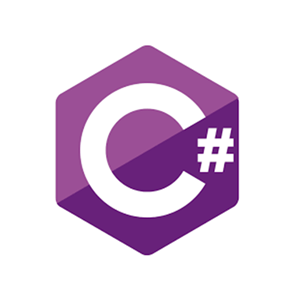Q:
C#.Net find output programs (Data Types) | set 2
belongs to collection: C#.Net find output programs
C#.Net find output programs
- C#.Net find output programs (Data Types) | set 1
- C#.Net find output programs (Data Types) | set 2
- C#.Net find output programs (Data Types) | set 3
- C#.Net find output programs (Operators) | set 1
- C#.Net find output programs (Operators) | set 2
- C#.Net find output programs (Operators) | set 3
- C#.Net find output programs (const Keyword) | set 1
- C#.Net find output programs (this Keyword) | set 1
- C#.Net find output programs (readonly Keyword) | set 1
- C#.Net find output programs (static Keyword) | set 1
- C#.Net find output programs (static Keyword) | set 2
- C#.Net find output programs (if else) | set 1
- C#.Net find output programs (if else) | set 2
- C#.Net find output programs (if else) | set 3
- C#.Net find output programs (switch statement) | set 1
- C#.Net find output programs (switch statement) | set 2
- C#.Net find output programs (switch statement) | set 3
- C#.Net find output programs (goto) | set 1
- C#.Net find output programs (Loops) | set 1
- C#.Net find output programs (Loops) | set 2
- C#.Net find output programs (Loops) | set 3
- C#.Net find output programs (Arrays) | set 1
- C#.Net find output programs (Arrays) | set 2
- C#.Net find output programs (Arrays) | set 3
- C#.Net find output programs (default Arguments) | set 1
- C#.Net find output programs (default Arguments) | set 2
- C#.Net find output programs (Parameter Passing) | set 1
- C#.Net find output programs (Enumeration) | set 1
- C#.Net find output programs (Enumeration) | set 2
- C#.Net find output programs (Boxing & Unboxing) | set 1
- C#.Net find output programs (Structure) | set 1
- C#.Net find output programs (Structure) | set 2
- C#.Net find output programs (Structure) | set 3
- C#.Net find output programs (Classes & Objects) | set 1
- C#.Net find output programs (Classes & Objects) | set 2
- C#.Net find output programs (Classes & Objects) | set 3
- C#.Net find output programs (Constructors & Destructors) | set 1
- C#.Net find output programs (Constructors & Destructors) | set 2
- C#.Net find output programs (Constructors & Destructors) | set 3
- C#.Net find output programs (Inheritance) | set 1
- C#.Net find output programs (Inheritance) | set 2
- C#.Net find output programs (Inheritance) | set 3
- C#.Net find output programs (Interface) | set 1
- C#.Net find output programs (Interface) | set 2
- C#.Net find output programs (Method Overloading) | set 1
- C#.Net find output programs (Method Overloading) | set 2
- C#.Net find output programs (Method Overriding) | set 1
- C#.Net find output programs (Method Overriding) | set 2
- C#.Net find output programs (Method Overriding) | set 3
- C#.Net find output programs (Operator Overloading) | set 1
- C#.Net find output programs (Operator Overloading) | set 2
- C#.Net find output programs (Operator Overloading) | set 3
- C#.Net find output programs (Namespace) | set 1
- C#.Net find output programs (Namespace) | set 2
- C#.Net find output programs (Exception Handling) | set 1
- C#.Net find output programs (Exception Handling) | set 2
- C#.Net find output programs (Exception Handling) | set 3




 c# programming
c# programming
Answer 1 :
Output:
Explanation:
The above program will generate a syntax error. because ubyte is not a built-in data type in C#.
Answer 2:
Output:
Explanation:
In the above program, we created the variables A, B, and C initialized with 10, 20, and 30, and then print the System types of the variable using the GetType() method.
Answer 3:
Output:
Explanation:
The above program will print "Hello" on the console screen. Here, we created a variable A of sbyte type and initialized with 10. The GetType() method will return System.SByte, and then we convert it into the string and compared with System.SByte. Then "Hello" will be printed on the console screen.
Answer 4:
Output:
Explanation:
The above program will print "Hiii" on the console screen. Here, we created a variable A of float type and initialized with 10. The GetType() method will return System.Single, and then we convert it into the string and compared with System.Float. Then the if condition will false and "Hiii" will be printed on the console screen.
Answer 5:
Output:
Explanation:
The above program will print "4" on the console screen. In the above program, we created three variables VAL, A, and B initialized with 0, 13, and 20.
Let's evaluate the expression,
VAL = (byte)(A * B); VAL = (byte)(13*20); VAL = (byte)(260); VAL = 4;As we know that the maximum value of a byte variable is 255, and we are assigning 260, then the value will we move in cyclic order. It means the value will move 5 numbers in cyclic order,
255 ->0 ->1 ->2-> 3->4
need an explanation for this answer? contact us directly to get an explanation for this answer